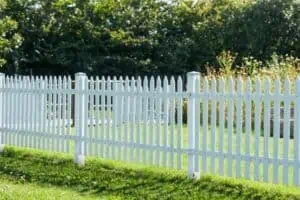How to Treat Wood?
If you want to keep your wood fence looking its best, you need to understand how to treat wood. A fence is constantly exposed to the elements and needs a protective coating to prevent wear and tear from the sun, rain, and insects. In addition to protecting the wood, a sealant or wax will also protect the fence from dust, dirt, and grime. You can also apply a weatherproof stain to the fence.
(Looking for sheet metal fencing installation? Contact us today!)

The first step is to clean the fence. You can wash it with soap and water or use a pressure washer. Be sure to use a hose tip that is designed to be used on the surface of the wood. Using the wrong sprayer tip can erode the wood too deeply.
Next, make sure to remove any mold or mildew. Using a solution of one cup of chlorine bleach in a gallon of water, kills the mold. Spray the fence with the solution and leave it on for a few minutes before rinsing it with a high-pressure spray nozzle.
You can also apply a protective coating to the fence by using a paint brush. It will help to cover the wood completely and provide a protective coating against everyday wear and tear. Some fence stains contain a sealer, which can be applied on top of the paint. This protects the fence from rust, weather, and graying.
After a new wood fence is installed, it is advisable to wait at least one month before applying a coating. Once the fence is dry, you can apply a sealant or wax to protect the wood. Waiting for at least one month will allow the new coating to cure.
Another option is to use a diluted bleach solution to kill the mold. Apply the solution with a garden sprayer or a rag and rubber gloves. Make sure to rinse the fence thoroughly after the bleaching process.
If you live in a humid climate, you may need to apply a wood preservative to the fence posts. These fungicides are safe to humans and animals, and they help to keep the wood from rotting.
If you notice a green or black stain on your fence, it could be algae. This is a common problem in areas with high humidity. Normally, the green stain is mold, and the black stain is algae. To clean the area, you can wipe it down with a strong garden hose, or you can use a cleaner containing sodium hypochlorite.
Aside from the normal cleaning, you should also inspect your fence for cracks, scratches, and dents. This will help you to avoid future rot outbreaks. As you examine your fence, you can remove loose pieces of wood, and replace damaged boards. Depending on your fence, you may need to re-screw or repair broken nails. Most home improvement stores carry repair tools and kits for these repairs.
Wooden fences can last a decade or longer if they are properly cared for. When you’re planning to install a new fence, you can consider purchasing a fence sealant that contains ultraviolet inhibitors. Sealing will prevent the wood from absorbing moisture, which can cause the fence to rot.

